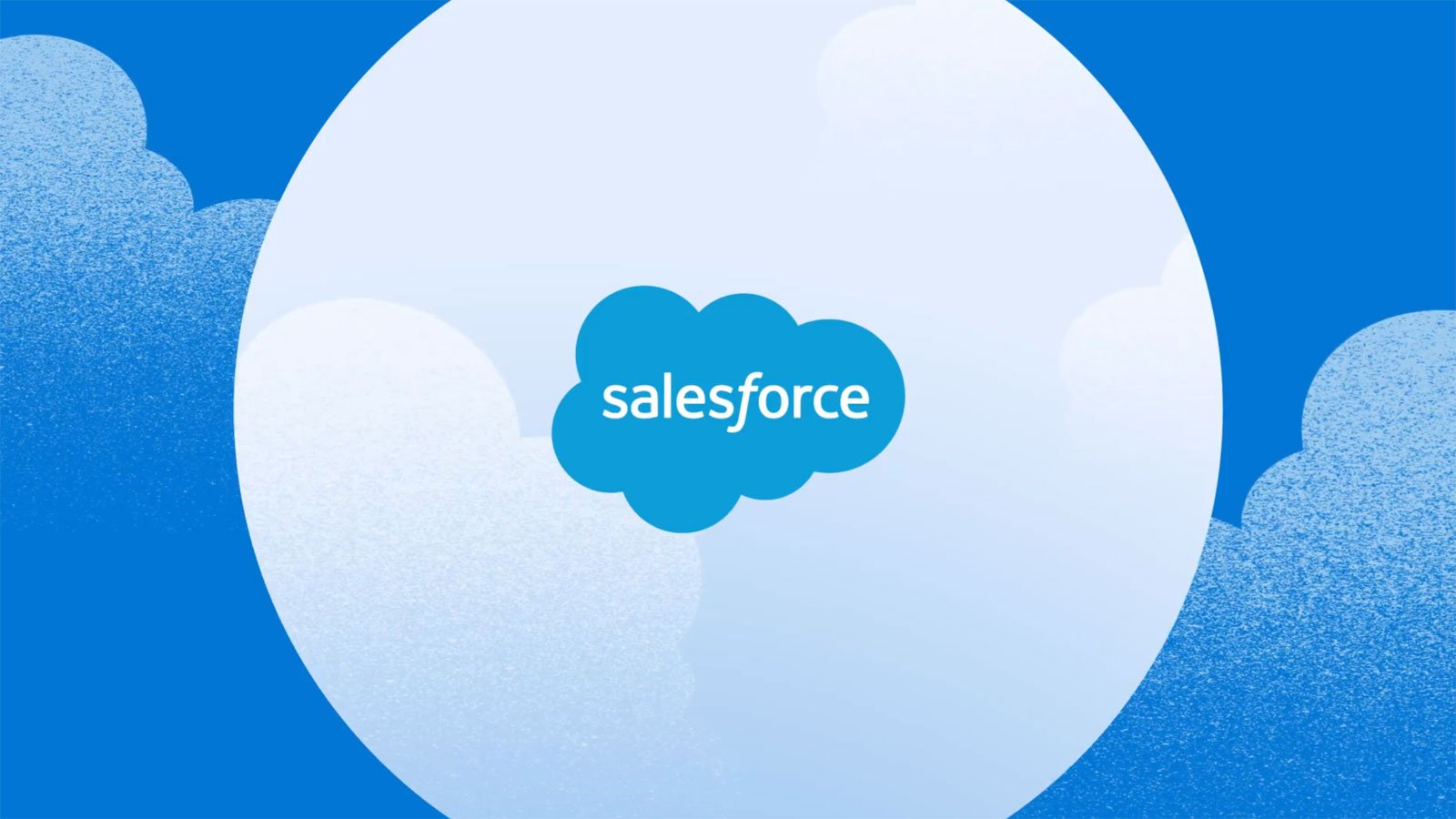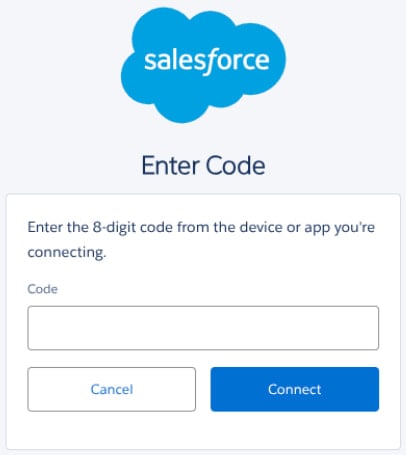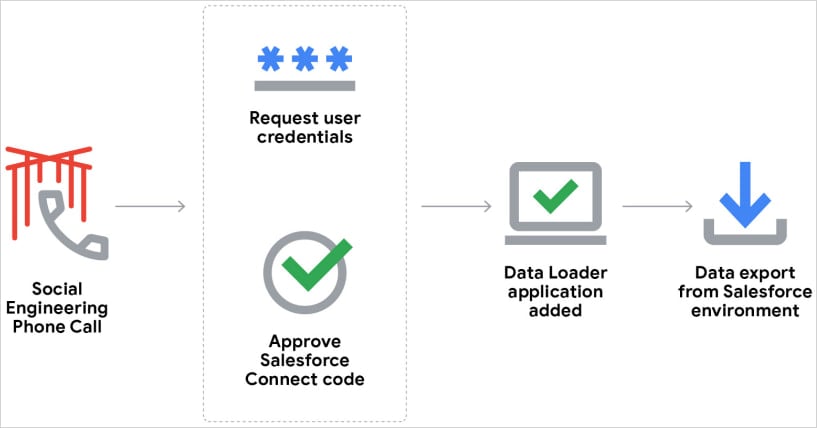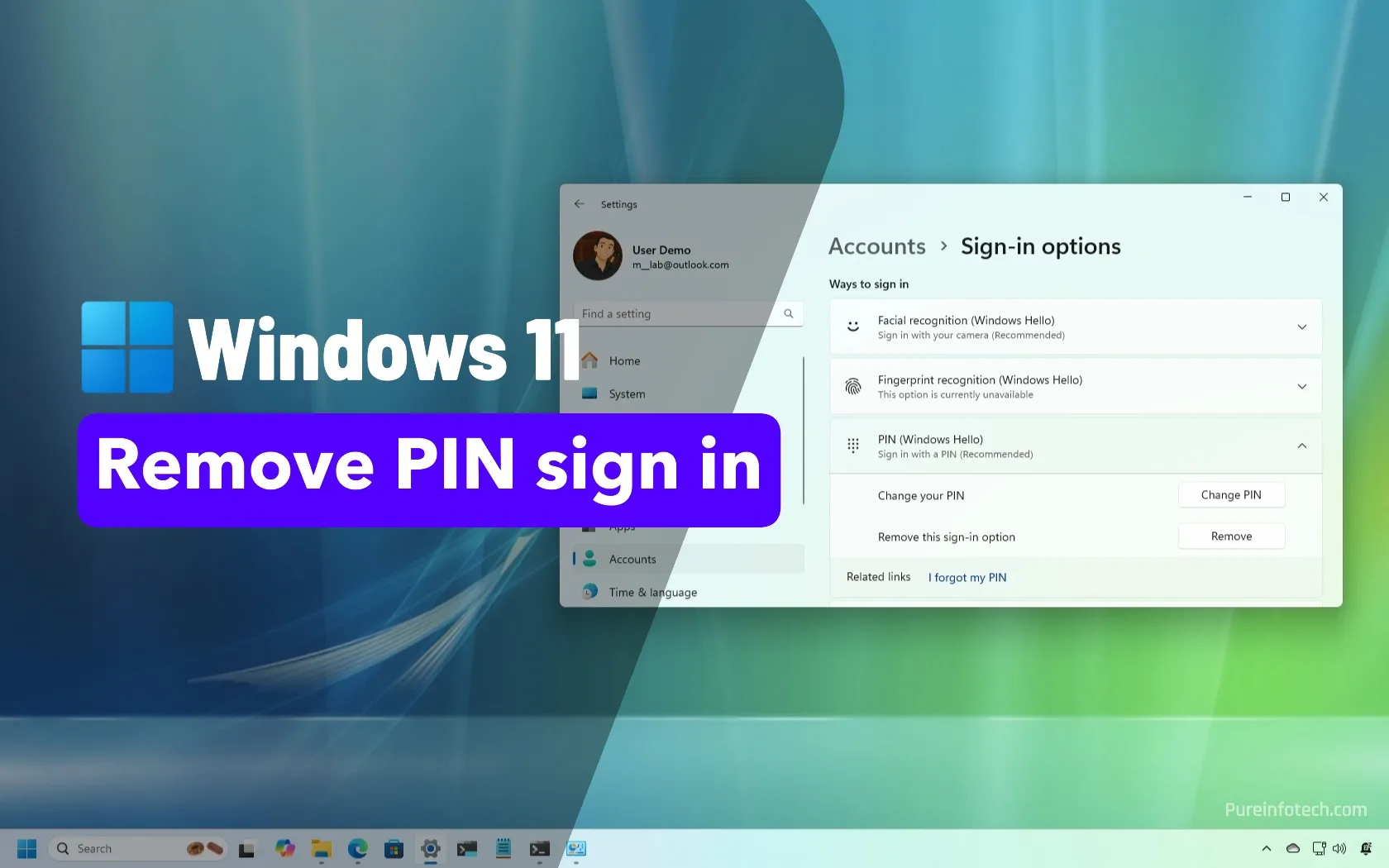Hackers target Salesforce accounts in data extortion attacks

Google has observed hackers claiming to be the ShinyHunters extortion group conducting social engineering attacks against multi-national companies to steal data from organization’s Salesforce platforms.
According to Google’s Threat Intelligence Group (GTIG), which tracks the threat cluster as ‘UNC6040,’ the attacks target English-speaking employees with voice phishing attacks to trick them into connecting a modified modified version of Salesforce’s Data Loader application.
The attackers impersonate IT support personnel, requesting the target employee to accept a connection to Salesforce Data Loader, a client application that allows users to import, export, update, or delete data within Salesforce environments.
“The application supports OAuth and allows for direct “app” integration via the “connected apps” functionality in Salesforce,” explain the researchers.
“Threat actors abuse this by persuading a victim over the phone to open the Salesforce connect setup page and enter a “connection code,” thereby linking the actor-controlled Data Loader to the victim’s environment.

Source: Google
The target organizations already use the Salesforce cloud-based customer relationship management (CRM) platform, so the malicious request to install the tool appears legitimate within the context of their workflow.
In the UNC6040 attacks, the app is used to export data stored in Salesforce instances and then use the access to move laterally through connected platforms such as Okta, Microsoft 365, and Workplace.
Accessing these additional cloud platforms allows the threat actors to access more sensitive information stored on those platforms, which can include sensitive communications, authorization tokens, documents, and more.
“UNC6040 is a financially motivated threat cluster that accesses victim networks by voice phishing social engineering,” describes the GTIG report.
“Upon obtaining access, UNC6040 has been observed immediately exfiltrating data from the victim’s Salesforce environment using Salesforce’s Data Loader application.”
“Following this initial data theft, UNC6040 was observed moving laterally through the victim’s network, accessing and exfiltrating data from other platforms such as Okta, Workplace, and Microsoft 365.”

Source: Google
In some cases, the data exfiltration process was stopped prematurely, as protection systems that detected unauthorized activity intervened to revoke access. The threat actors appeared to be aware of this risk, experimenting with various packet sizes before escalating their attack.
UNC6040 also used modified versions of the Salesforce Data Loader appropriately named to fit the social engineering context. For example, renaming it to “My Ticket Portal” and tricking victims into installing the app on their systems during an alleged support phone call.
GTIG reports the threat actors use Mullvad VPN IPs when exfiltrating the Salesforce data to obfuscate the activity.
Google says that attacks used phishing pages impersonating Okta, linking them back to threat actors associated with the “The Com.”.
Once data is stolen, the threat actors will eventually attempt to extort the company into paying a ransom not to leak the data. Google says that these extortion demands can come month laters, claiming to be from the infamous ShinyHunters extortion group.
“In some instances, extortion activities haven’t been observed until several months after the initial UNC6040 intrusion activity, which could suggest that UNC6040 has partnered with a second threat actor that monetizes access to the stolen data,” explains Google.
“During these extortion attempts, the actor has claimed affiliation with the well-known hacking group ShinyHunters, likely as a method to increase pressure on their victims.”
ShinyHunters is a well-known hacking group that has long been associated with data theft attacks used to extort companies into paying a ransom.
Threat actors associated with the group have been behind numerous high-profile attacks, including the SnowFlake data-theft attacks and the PowerSchool data breach that impacted 62 million students.
For organizations using Salesforce Google proposes restriction of “API Enabled” permissions, limitation of app installation authorization, and blocking access from commercial VPNs like Mullvad.
More information on how to protect Salesforce from social engineering attacks is available here.
Source link












